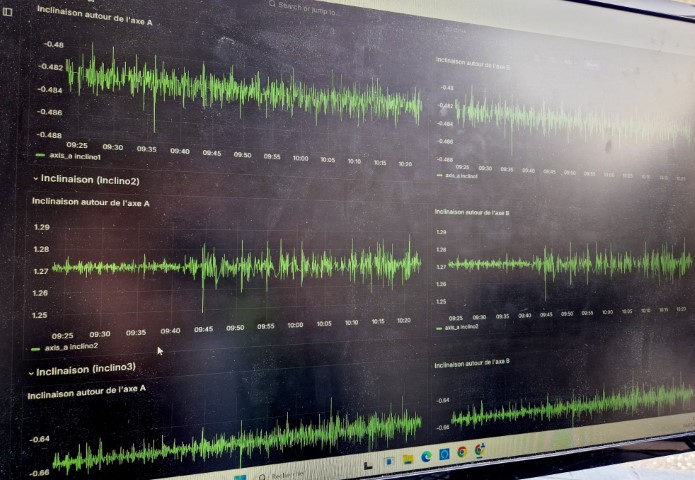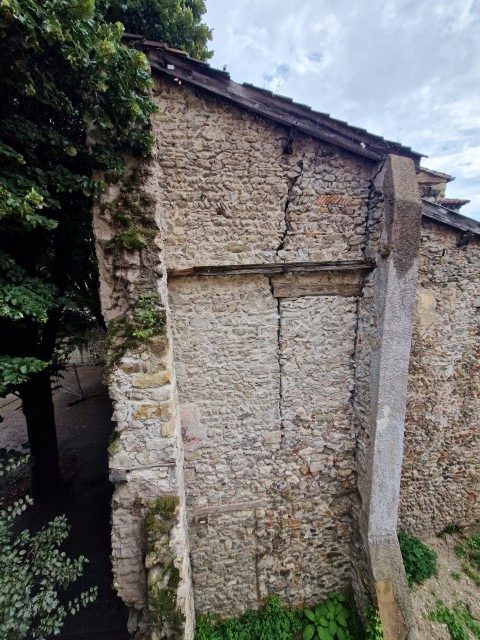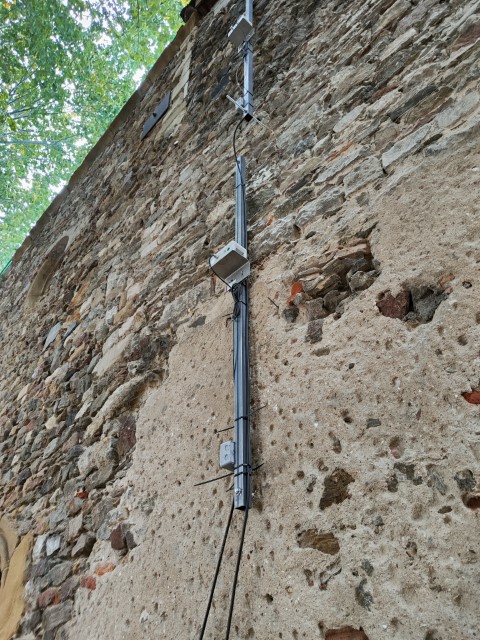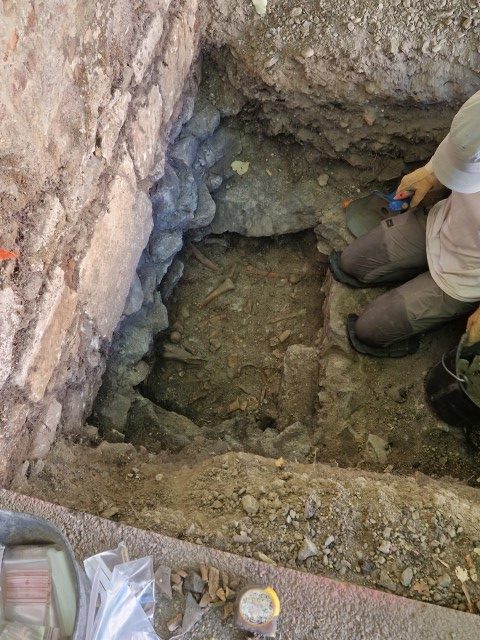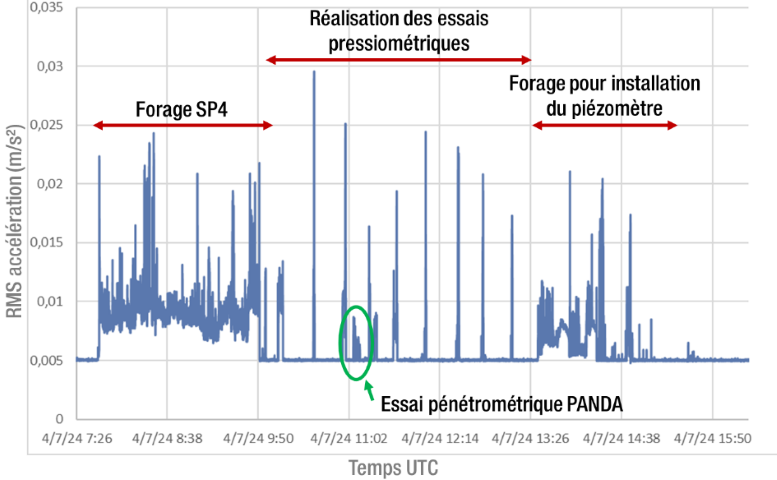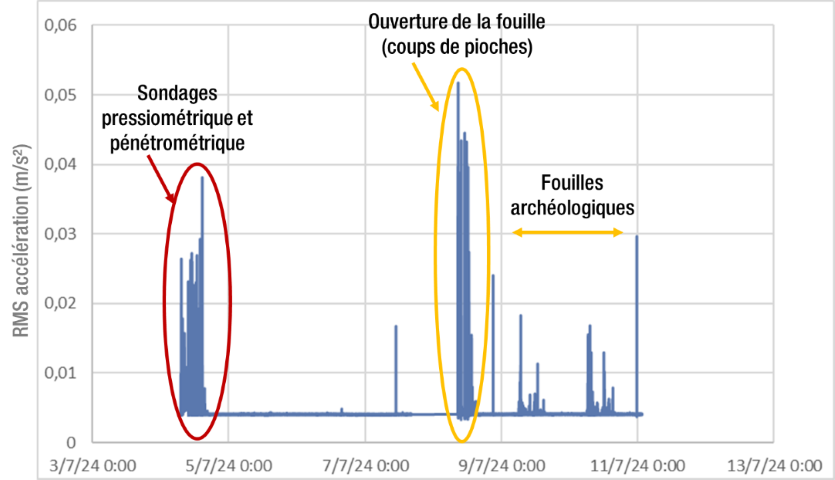CIDECO recently implemented an instrumentation and monitoring system for the façades of a heritage building. The project aimed to ensure the safety and preservation of this historical site by combining advanced technology with structural engineering expertise.
As part of the rehabilitation process, several geotechnical investigations were conducted, including:
- Penetrometer tests
- Pressuremeter tests up to 15 meters deep
- Foundation trenching
- Borehole drilling for piezometer installation
To monitor façade stability, CIDECO installed a network of connected sensors to measure structural movements:
- Inclinometers to monitor tilting
- Crackmeters to track crack opening
- Extensometers to measure ground settlement at the wall base
- Accelerometers to record vibration levels
Our teams remained on-site throughout the week to oversee the investigations in real time.
Reassuring conclusion: The measurements confirmed no movement or worsening of existing disorders, ensuring structural stability.
Archaeological finding: Foundation trenching revealed the presence of human remains, prompting additional archaeological excavations.
Key observations from the analysis:
- Surprisingly, mechanical drilling produced less vibration on the adjacent wall than dynamic penetrometer (PANDA) testing, which involves hammering a metal rod into the ground.
- Manual pickaxe excavation generated more vibration than both drilling and pressuremeter testing.
- As expected, archaeological excavations, performed with exceptional care, caused the lowest vibration levels.
This week of façade instrumentation and monitoring provided reassurance for all stakeholders — both the project owner and the geotechnical teams working in close proximity to the monitored walls.
👉 Discover our structural instrumentation solutions.
